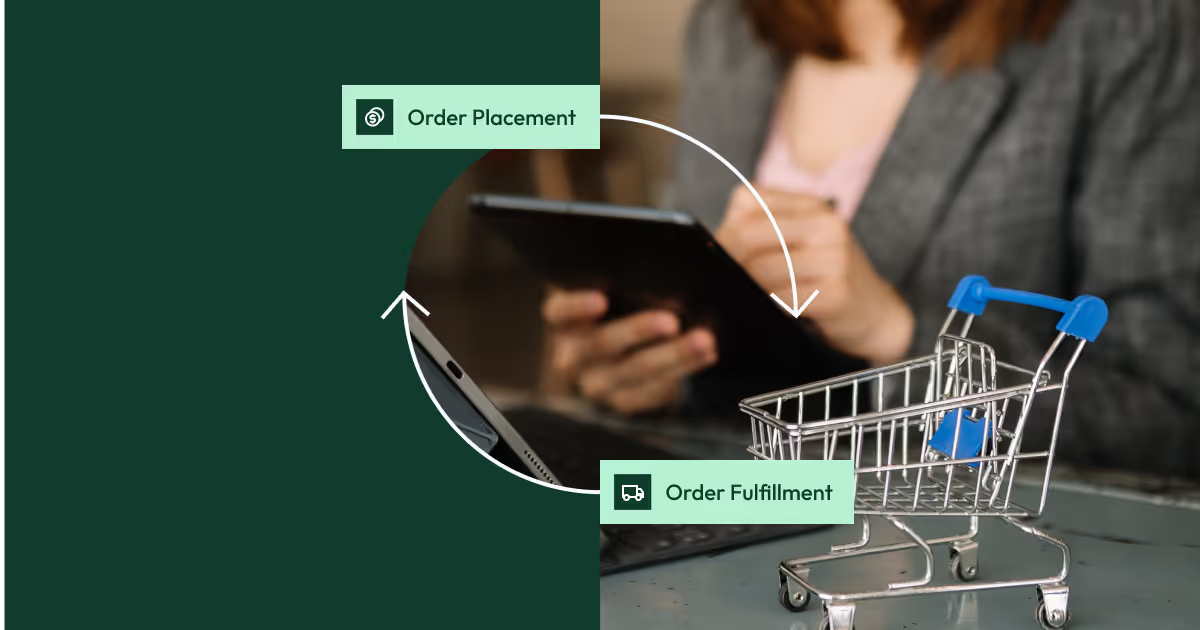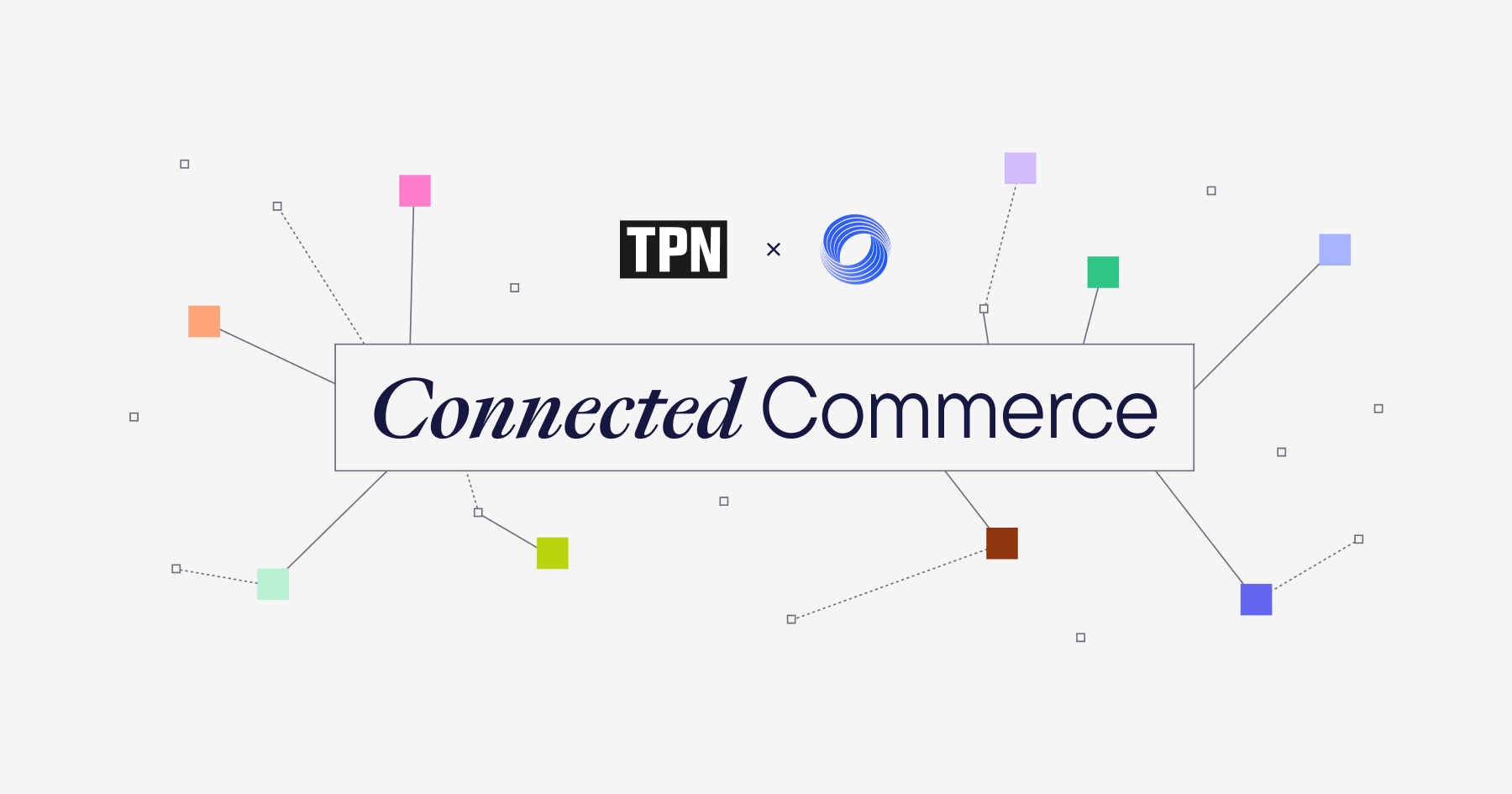
For any manufacturer, distributor, or wholesaler, ongoing digital transformation is not a distant trend—it's a present-day reality. At the heart of this shift is business-to-business ecommerce (eB2B), a channel that has moved from a niche market to a dominant force). This is more than just selling to businesses online; it's a fundamental re-imagining of commercial relationships, supply chains, and go-to-market strategies. This definitive guide serves as a playbook for understanding and mastering the eB2B landscape. For businesses ready to move beyond traditional sales models, mastering eB2B is the key to unlocking unprecedented efficiency, market reach, and sustainable growth.
What is business-to-business eCommerce (eB2B)?
At its most fundamental level, business-to-business ecommerce (eB2B) is the digital transaction of goods and services between two businesses. This definition encompasses a vast and varied range of commercial activities. It could be a restaurant chain ordering produce from a supplier through an online portal, a construction firm purchasing bulk building materials from a manufacturer's digital catalog, or a small retailer sourcing inventory from a wholesaler's online marketplace.
Unlike the B2C model, eB2B transactions are characterized by their complexity, scale, and the relationship-driven nature of the exchange.
The rise of business-to-business eCommerce (eB2B)
Business-to-business ecommerce (eB2B) is experiencing a period of explosive growth, fundamentally altering how businesses purchase everything from raw materials and component parts to finished goods for resale.
According to a definitive report by Grand View Research, the global eB2B market is projected to expand at a compound annual growth rate (CAGR) of 18.2% from 2024 to 2030. To put that momentum into perspective, the market is forecast to surge from an already massive USD 18.7 trillion in 2023 to over USD 57.5 trillion by 2030.
But what does it truly take to win in this complex and competitive channel? It's not as simple as launching a website and waiting for orders. Success requires a deep understanding of the unique B2B buyer, a sophisticated approach to technology, and a nuanced go-to-market strategy.
How does eB2B fundamentally differ from B2C eCommerce?
Understanding the distinction between B2B and B2C is the first and most critical step in developing a successful strategy. While both involve online transactions, their underlying dynamics are noticeably different. The B2B buyer is not an individual shopping for personal needs; they are a professional making a calculated purchasing decision on behalf of an organization.
This core difference impacts every aspect of the ecommerce experience:
Ignoring these differences is the single most common reason why businesses fail when they first venture into the eB2B channel—winning in eB2B requires building a strategy specific to the eB2B buyer.
The eB2B advantage: Core benefits for modern businesses
Adopting a robust business-to-business ecommerce strategy is about unlocking significant, tangible value across your entire organization.
- Massive market expansion: An eB2B platform transcends geographical limitations, opening up your business to a national or even global customer base that would be impossible to reach with a traditional field sales team alone.
- Drastic increase in sales efficiency: By streamlining the order process, you empower customers with self-service capabilities. This frees up your skilled sales team to move from being simple order-takers to strategic consultants, focusing on high-value activities like acquiring new enterprise accounts and nurturing key relationships.
- Lower cost to serve: Digital transactions significantly reduce the administrative overhead associated with manual data entry, paper invoices, and phone orders. This leads to fewer errors, faster processing times, and a lower overall cost per transaction.
- Superior customer experience: Today's B2B buyers expect the same frictionless, personalized, and convenient digital experiences they enjoy as consumers. A well-designed eB2B platform provides 24/7 access to ordering, account information, and support, dramatically improving customer satisfaction and loyalty.
- Invaluable data & insights: Every interaction on your eB2B platform generates a wealth of first-party data. You can analyze purchasing patterns, search queries, and customer behavior to optimize product assortments, forecast demand with greater accuracy, and deliver highly personalized marketing and product recommendations.
Navigating the eB2B landscape: 4 key operator models
The business-to-business ecommerce sphere is not a single entity. It's a diverse ecosystem composed of different operator types, each with unique characteristics. Understanding where you fit and which partners to engage with is crucial.
Online marketplaces: These are the behemoths like Amazon Business, Alibaba.com, and IndiaMART. They function as massive, multi-seller platforms connecting thousands of businesses.
- Pros: Unmatched customer reach, established infrastructure, and a relatively low barrier to entry.
- Cons: Intense price competition, limited brand control, and marketplace fees that can eat into margins.
Digital disruptors: These are typically well-funded, tech-focused startups aiming to digitize fragmented, traditional industries. Examples include Udaan (India) or Bukalapak (Indonesia), which connect small retailers with manufacturers.
- Pros: Deep penetration in specific emerging markets, innovative technology, and a focus on solving niche supply chain problems.
- Cons: Business models can be volatile, and many face profitability challenges as they scale.
Digital wholesalers & distributors: This category consists of traditional, often store-based, wholesalers who are aggressively expanding their ecommerce capabilities. Think of Costco, Sam’s Club, or BJ’s.
- Pros: Established logistics networks, deep customer relationships, and a trusted reputation within their industries.
- Cons: May be slower to adopt new technology and can have rigid operating models.
Direct-to-business (D2B) CPG platforms: A rapidly growing segment where large manufacturers build their own eB2B platforms to sell directly to their business customers. AB InBev's BEES platform is a prime example, achieving massive scale by connecting directly with retailers and bars.
- Pros: Complete control over branding, pricing, and the customer experience. Direct access to invaluable customer data.
- Cons: Requires the most significant upfront investment in technology, marketing, and logistics.
A step-by-step guide to launching your eB2B strategy
Venturing into business-to-business ecommerce requires a deliberate and strategic approach. Here is a five-step framework to guide your journey.
Step 1: Size your opportunity with a bottom-up approach
Before you choose a platform, you must develop a realistic assessment of your market opportunities.
A great starting point is building out a detailed, bottom-up analysis. This involves:
- Starting with your specific business and product categories.
- Identifying the genuinely relevant eB2B operators (marketplaces, distributors, etc.) that your target customers actually use in your key markets.
- Calculating the size and growth of this specific, addressable market based on that select set of operators.
This creates a smaller, but far more accurate, view of your true potential and clarifies which partners are most critical to your success. For a deeper dive into this strategic methodology, you can explore our original post on unlocking your eB2B potential.
Step 2: Master the eB2B digital shelf
The B2B digital shelf requires a bespoke approach beyond copying and pasting your B2C assets.
- Product content: Go beyond lifestyle imagery. B2B buyers need detailed technical specifications, downloadable CAD files, compliance sheets, and multiple high-resolution images that clearly show product details, including bulk packaging.
- SEO & search: B2B keyword research is different. Buyers use technical terms, part numbers, and highly specific phrases. Your SEO strategy must target these long-tail keywords.
- User experience (UX): The site must be designed for efficiency. Features like fast re-ordering from past purchases, clear navigation by product category or technical spec, and a seamless checkout process are paramount.
Step 3: Adapt your messaging to the eB2B buyer
Your marketing must shift from broad appeals to targeted, value-based communication to attract B2B buyers in a competitive landscape.
- Content marketing: Become a resource, not just a vendor. Develop valuable content like white papers, detailed case studies, and buyer's guides that help your customers solve problems and add these resources to a hub on your website or share them on professional networks like LinkedIn.
- Email marketing: Segment your email lists based on customer type, industry, or purchase history to deliver highly relevant promotions, product updates, and content.
- Sales team alignment: The B2B platform(s) you choose should empower your sales team by handling the routine orders and providing data that helps identify upsell and consulting opportunities with high-value clients.
Step 4: Efficient eB2B logistics & fulfillment
eB2B fulfillment is a different beast than B2C with complex delivery requirements.
- Warehouse management: Your warehouse must be equipped to handle bulk orders, kitting, and specialized packaging.
- Shipping & freight: Integrate with carriers that can handle less-than-truckload (LTL) and full truckload (FTL) freight and provide accurate shipping quotes for these complex orders.
- Inventory management: Real-time, multi-location inventory visibility is non-negotiable to prevent stockouts and manage customer expectations for large orders.
The future of eB2B & key trends to watch
The evolution of business-to-business ecommerce is accelerating. Staying ahead of the curve requires a keen eye on the trends that are shaping the future of the industry.
- AI-powered personalization: Artificial intelligence will move beyond simple product recommendations to personalized catalogs for individual users taking into consideration pricing dynamics and predicting future inventory needs.
- Embedded commerce: The buying process will become increasingly embedded directly into business workflows. Imagine a field technician's diagnostic tool automatically ordering a replacement part, or a factory's software re-ordering raw materials when inventory hits a certain threshold.
- Mobile-first eB2B: The use of mobile devices for complex B2B research and purchasing will become standard. Platforms that offer a seamless and powerful mobile experience will have a significant competitive advantage.
- Sustainability as a decision driver: Procurement departments are increasingly being tasked with evaluating suppliers based on their sustainability practices. Demonstrating a commitment to an ethical and environmentally friendly supply chain will become a key competitive differentiator.
Your eB2B transformation starts now: How Flywheel can help
The shift to a robust business-to-business ecommerce model is one of the most significant growth opportunities in today’s digital landscape. But as we’ve detailed, the path is filled with unique challenges and requires a specialized, data-driven approach. Winning in this channel means understanding the nuances of different operator models, accurately sizing your real opportunity, and tailoring your entire commercial strategy to the unique needs of the B2B buyer.
We specialize in helping brands and manufacturers navigate the complexities of the digital shelf, and our expertise extends deep into the eB2B channel. We don’t just offer high-level advice; we partner with you to build and execute a winning strategy from the ground up.
If you are ready to stop guessing and start winning in business-to-business ecommerce, we’re here to help guide you.
[Get in touch with our Flywheel Consulting team today to start your eB2B journey.]
What is the core difference between eB2B and traditional business-to-business sales?
The core difference is the shift from a manual, rep-driven process to a digital, self-service relationship. Traditional sales depend on your team actively taking orders during business hours. eB2B provides your clients with on-demand access to their specific catalogs and pricing, allowing them to make purchases that fit their own schedule and procurement workflows.
Beyond efficiency, what is the most valuable long-term benefit of an eB2B channel?
The most valuable long-term benefit is the wealth of first-party data you acquire. Every online interaction provides deep insights into your customers' purchasing patterns and needs. This data is a powerful strategic asset, allowing you to forecast demand more accurately, personalize offerings, and identify new growth opportunities long before your competitors.
Can small businesses succeed in eB2B?
Absolutely. Their key advantage is strategic focus. Instead of competing on volume or breadth of catalog, a small business can dominate a specific niche by providing superior product expertise and more responsive, personalized service—qualities larger competitors often lack. eB2B technology then acts as a force multiplier, giving them the reach of a large enterprise without the overhead.
How is the "B2B Digital Shelf" different from what I do for my B2C or consumer-facing products?
The fundamental difference is purpose. A B2C shelf is designed for persuasion, using lifestyle imagery and marketing copy. In eB2B, the digital shelf is designed for procurement. It must function as a technical resource, providing spec sheets, logistical data, and the critical information a professional buyer needs for a calculated, documented purchasing decision.
Ready to grow your business?
Let’s discuss the best approach to meet your brand’s specific needs.
Let's connect


